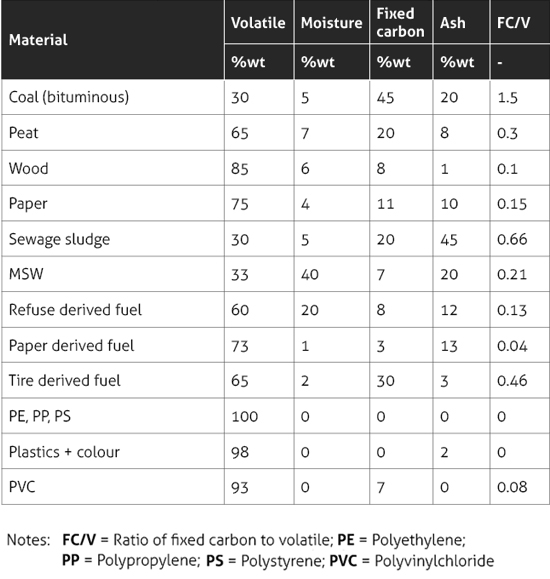The incinerator’s capacity is dependent on waste composition:
- Incineration Capacity: The higher the heating value of the waste, the lower is the capacity in terms of kg/h that can be incinerated. This can be explained by noting that waste that has a higher heating value requires more air per unit of mass to incinerate than does waste with a lower heating value.
- Load Capacity: The size of the batch loaded into the incinerator is based on the heating value of the waste. The higher the heating value, the smaller (lighter) the load should be, otherwise an insufficient amount of air will generate black smoke.
- Waste Characterization: When this is not known, use indications of the components present. To assist in getting a qualitative estimate of the heating value of a batch of waste, the heating values of common waste components are shown in the below table.
- Volatile Content: Another important waste component is the volatile content in the waste. The table below shows the proximate volatile components of various materials and wastes. In general, this component is responsible for smoke generation. Therefore, as in the case with heating value, the higher the volatile content, the smaller the load charged into the incinerator.
Proximate Composition Of Various Materials

Heating Values Approximate Of Common Waste Components

